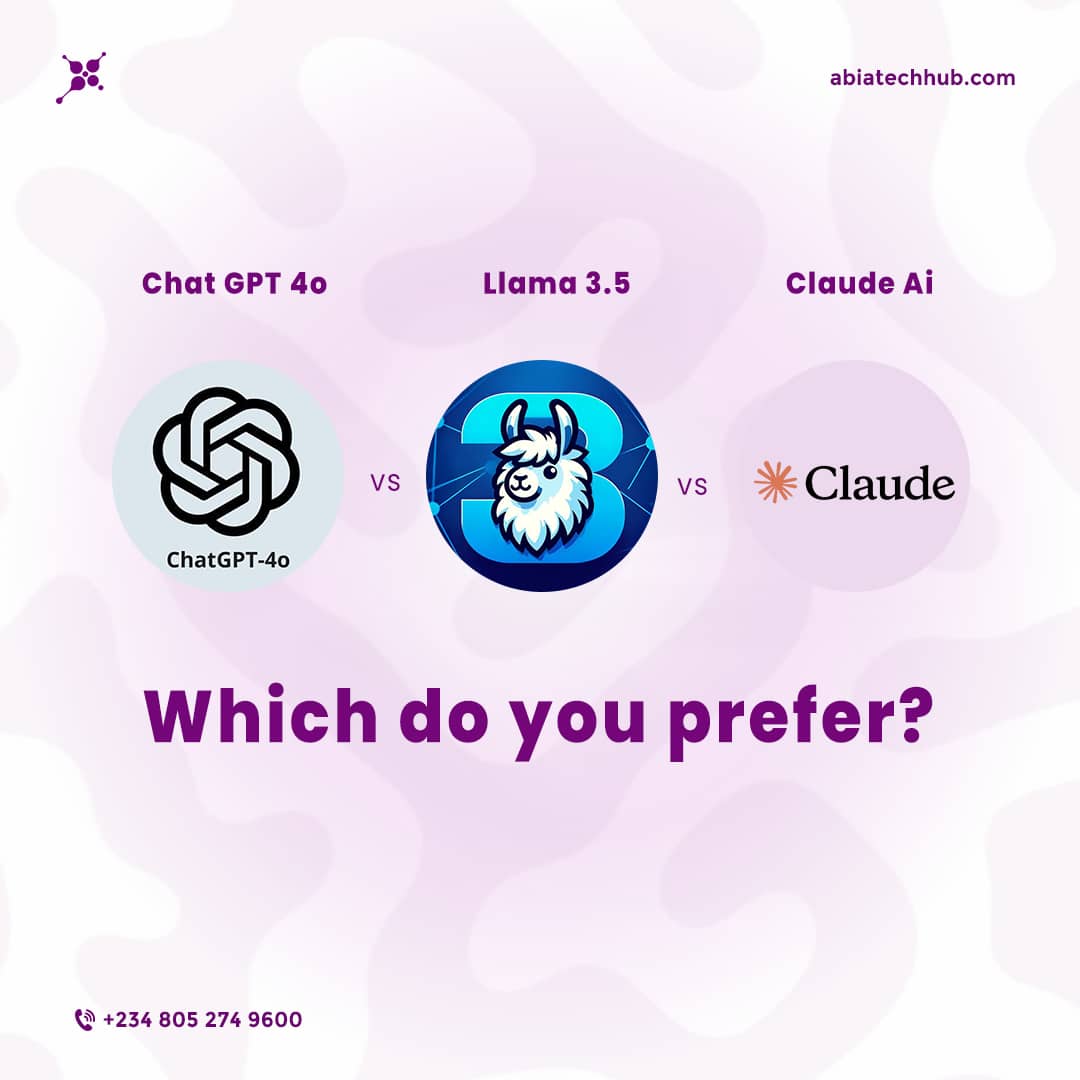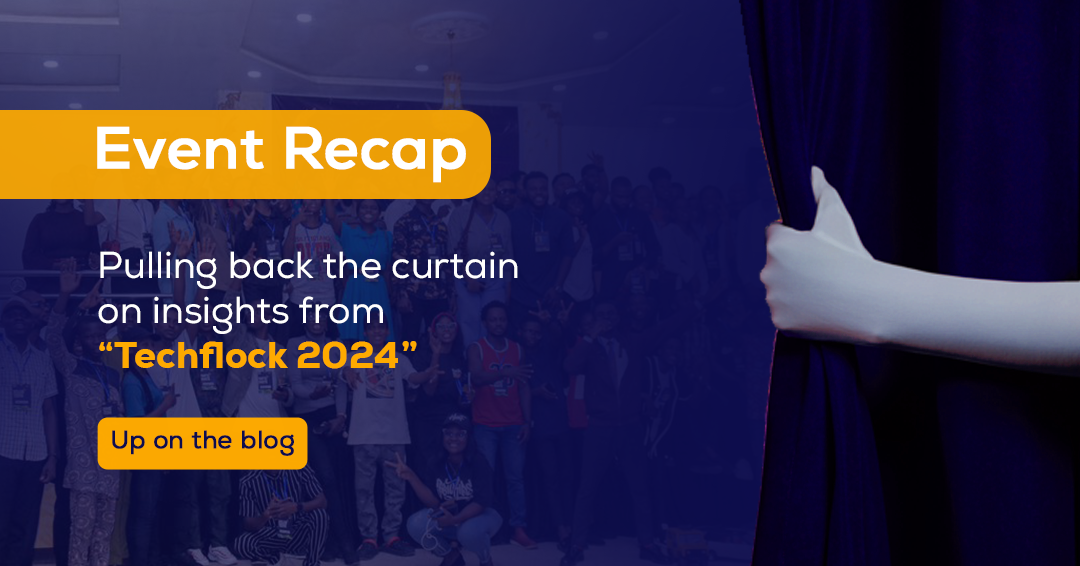Artificial Intelligence (AI) has significantly taken a leap in the Tech landscape, especially in the large language models (LLM’s) field. These models are programmed to comprehend and generate human-like textual copy which are important in the revolutionized future of technology. Some of these prominent models in this space are Llama 3.1, GPT-4o, and Claude 3.5. In this article, we will itemize significant comparison factors of these leading models, evaluating their architectural models, capacities, performance, and their various use cases.
OVERVIEW OF THE MODELS
- Llama 3.1
Llama 3.1 is the latest model from Meta’s AI research department. This is an advanced iteration from its previous models in terms of scale, performance, and capability. The Llama 3.1 has a high versatility and efficiency, also leveraging on advanced training techniques and a robust architecture.
- GPT-4o
GPT-4o which is one of OpenAI’s latest development is an extension of the GPT-4 series. This technology was built with advanced features and performance metrics. It features a natural language understanding and generation which makes it a powerful tool that can be used across various application. Its advanced features make it to stand out from other contenders.
- Claude 3.5
Claude 3.5 which was invented by Anthropic is the most recent version in the Claude series. This technology has a key focus on safety, ethical considerations, and alignment with human values. The Claude 3.5 was a representation of Anthropic’s commitment to building high performance AI that adheres to thorough standards of safety and ethical use.
ARCHITECTURE AND TRAINING
- Llama 3.1
Llama 3.1 was developed with an enhanced architecture that included several improvements from the Llama 3.0. It leverages on an expansive neural network with several billions of parameters which are designed to enhance contextual understanding in other for it to generate accurate results. The training involves a range of diverse dataset which ensures that the model can handle a wide array of topics and languages effectively.
- GPT-4o
GPT-4o is built on the GPT-4 architecture with enhanced performance integration. It leverages from a larger model size and an extended training regimen which enables it to generate a more coherent and contextually relevant responses. OpenAI has integrated advanced operations such as reinforcement learning from human feedback (RLHF) to fine-tune the model’s response and enhance its alignment with the intention of the user.
- Claude 3.5
Claude 3.5 technology is focused at enhancing safety and interpretability. The model is programmed with a focus on ethical AI usage, integrating techniques to minimize diagonal thoughts and ensure that its responses is in-line with human values. Claude 3.5’s architecture features mechanisms for improved handling of sensitive topics and generating proper results.
PERFORMANCE AND CAPABILITIES
- Llama 3.1
Llama 3.1 successfully thrives in tasks that require a deep contextual understanding of complex and simple text generation. This technology has an incredible performance in creative writing, technical explanations, and conversational AI. This model has the ability to adapt to various domains and is efficient in handling large datasets, which makes it a versatile tool for both business and research applications.
- GPT-4o
GPT-4o is prominently recognized for its natural language processing capabilities. It generates coherent and contextually accurate text incredibly well. It has a unique performance in task operation that involves complex understanding and reasoning. GPT-4o is also a demonstration of superior conversational abilities which makes it a common choice for applications that involves an interactive AI.
- Claude 3.5
Claude 3.5 is outstanding for its commitment to safe and ethical AI. Though it remains in same performance class with its contenders in terms of generating accurate outputs, a key distinction is its focus on reducing risks associated with AI deployment. Claude 3.5 is programmed to handle sensitive topics of discussion with care and intention to provide responses that are in-line with ethical guidelines.
USE CASES AND APPLICATIONS
- Llama 3.1
Llama 3.1 is suitable for a large range of applications like content creation, research support, and conversational agents. Its versatility makes it an ideal choice for industries that require comprehensive detail and varied text generation like media, education, and technology.
- GPT-4o
GPT-4o is a very common choice when it comes to customer service automation, interactive storytelling, and complex problem-solving scenarios. The GPT-40o thrives in its ability to engage in relevant conversations and give insights based on extensive knowledge. These features make it a common alternative for businesses that wants to improve user engagement and support.
- Claude 3.5
The Claude 3.5 is primarily useful in a range of applications that require a high degree of safety and ethical considerations. This include contents with sensitive information, where ethical implications are significant. This is most suitable for educational applications, mental health support applications, and other context where responsible AI use is critical.
CONCLUSION
Llama 3.1, GPT-4o, and Claude 3.5 are leading AI technologies that have distinctive features that enables them to thrive in various industries according to their performance, capabilities, and strengths. Choosing between these three AI technologies strongly depends on your desired output and specific needs.
As the world continues to evolve in the Tech Landscape, Artificial Intelligence significantly affects humanity and its overall activities.



